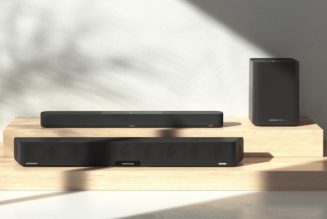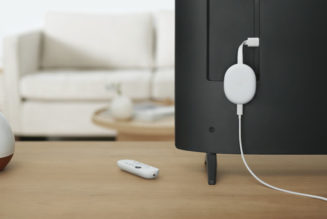We saw the first public demo of Amazon’s flying indoor security camera, but the company says the $250 autonomous indoor drone is still not ready for the real world.
The Always Home Cam, Ring’s autonomous indoor security drone, made its public debut at CES this week. But it was flying in an empty room behind a glass door and disappearing into a side room between flights, so we never saw it take off or land. The demo, while impressive, shows that it’s unlikely we’ll see Ring’s indoor security camera patrolling your living room anytime soon.
Despite announcing preorders (by invitation only) for the security camera in 2021 and saying it would ship to customers’ homes that year, Ring still hasn’t committed to a new date. “We are looking forward to — in the next short future — shipping it out to customers at high volume,” founder Jamie Siminoff told The Verge in an interview. But he also said 2024 was the earliest we could expect to see it widely available.
:format(webp)/cdn.vox-cdn.com/uploads/chorus_asset/file/24340300/Nest_Drone_Camera.00_11_16_05.Still011.png)
The cost, combined with the complexities of dealing with adapting to every potential scenario in a home, is proving to be a big challenge. “It is literally an autonomous flying vehicle in your home,” he says. “There’s a lot of the ‘devil is in the details’ here.”
Making it at a price point that is consumer friendly is also hard. Siminoff says it will cost $249.99, but “if it was a $2,000 product, we could put the sensors on it today, and it would be fine.” Additionally, making it work reliably in homes with lots of windows and mirrors (you know, most of them) has been tricky.
The lidar sensors the Always Home Cam uses for navigation can’t easily “see” mirrors and windows — they need a reflection of a wall in the glass to determine space, says Siminoff. The room the demo was in had one large window and three walls. If it had had three windows and one wall, the drone would probably be flying into the windows.
However, Siminoff did say Ring’s been working on a feature where the camera will not move if it’s uncertain about its position. In that scenario, it would just land rather than try to return to its home base.
:format(webp)/cdn.vox-cdn.com/uploads/chorus_asset/file/24340311/Ring_Drone_Camera.00_34_51_09.Still013.png)
The flying camera has essentially the tech of the Ring Video Doorbell Pro 2 built into a drone. It’s lightweight and designed to be an autonomous indoor security camera that can fly around your home to check for trouble or see if you left the stove on.
It’s pretty loud so that you know when it’s flying and there’s no risk of it sneaking up on you. I could hear it through the glass door of the demo room clearly, even with all of the ambient noise of the show floor.
The camera uses lidar sensors to create a map of your home (with your guidance) and will only travel along those paths. It only records when in flight and docks in a small “basket” to charge, where its camera lens is blocked.
Siminoff told The Verge that when it is generally available, the plan is to sell it in conjunction with Ring’s home security system, Ring Alarm, so it only flies when the system is set to armed. “It’s not supposed to be flying when there’s anyone home,” he says. “For that, we have the Astro robot.” Astro is an autonomous robot with a camera that roams around your home on wheels, rather than wings. It costs $1,000 and is also not widely available to buy yet, but you can sign up for an invitation to purchase it and it has actually shipped to some customers.
Along with the demo, The Verge got some hands-on time with the Always Home Cam and a few of the other products Ring was showcasing at CES. So, check out our video for a first look since it’s going to be a while until you can get your hands on one.
Correction, 12:25PM ET: We implied that Ring hadn’t ever said when the product would ship, but the company actually did originally say it would arrive in 2021. If it takes until 2024, it would be at least two full years behind schedule.









